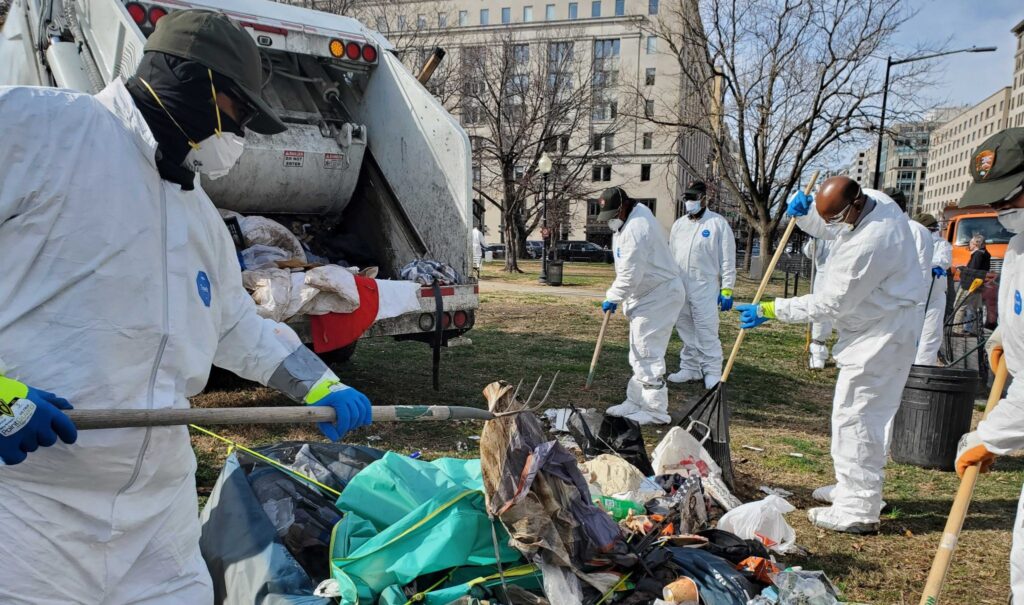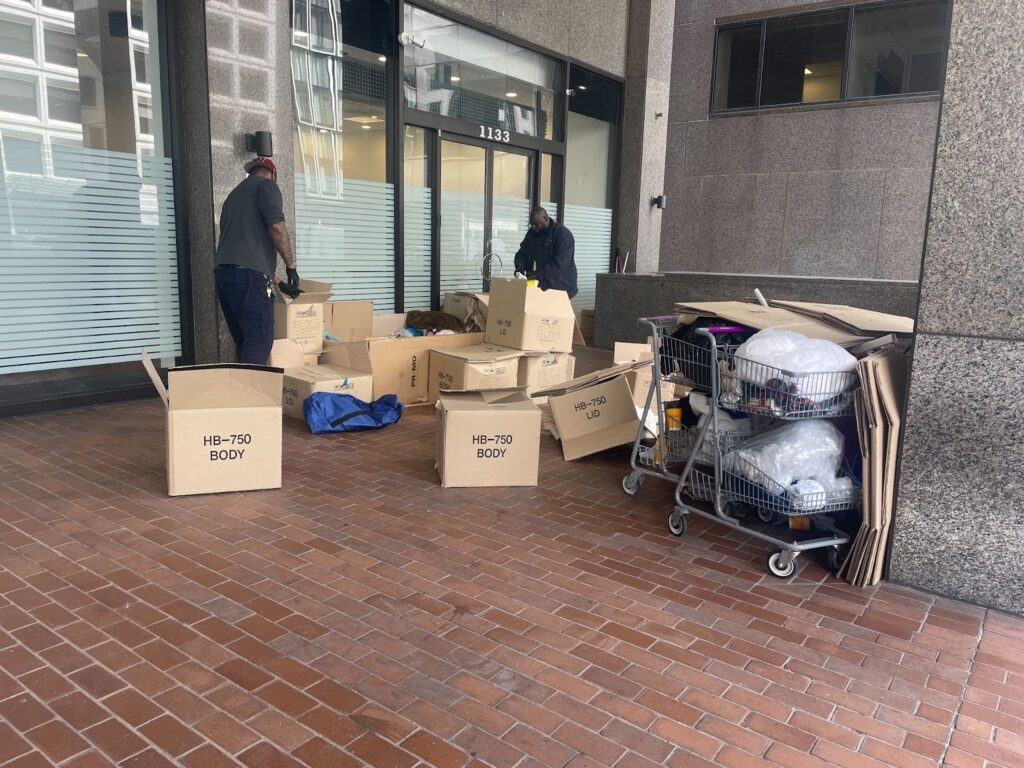It wasn’t the first time Moon has packed his life into his cobalt-blue backpack. Now middle-aged, he has left countless temporary homes since becoming homeless at 15. But this time, he was planning his next move in a city with a dwindling number of places where unhoused people can sleep outdoors.
“There’s just nothing else,” Moon said, the stress evident in his voice as he was forced to leave McPherson Square. “I have nothing.”
Moon was one of about 70 people who lived in McPherson Square, a park just blocks away from the White House, until the National Park Service (NPS) closed the area on Feb. 15 at the request of the District. The eviction — carried out by dozens of NPS workers over five hours — was originally scheduled for April, in the hope that an extended lead time would give social workers the chance to connect residents to housing. But D.C.’s Deputy Mayor for Health and Human Services Wayne Turnage requested NPS reschedule the closure for February, citing health and safety concerns that advocates and encampment residents have repeatedly pushed back on.
At a D.C. Council hearing the day following the closure, D.C. officials said 54 of 74 identified unhoused residents living in McPherson Square “initially accepted outreach.” Forty-seven of those 54 people were found to be eligible for a housing resource, and the city reported having offered 30 some form of short-term housing ahead of the eviction in a second hearing on Feb. 22.
However, only 22 people who lived in McPherson moved into temporary housing on or before Feb. 15. Another three moved to shelters, and two into permanent housing. Park Police arrested another two residents who refused to leave the park, though they were released later that day, according to reporting from The Washington Post. Today, there are 49 people displaced from this encampment living on the city’s streets, according to city officials.
Both D.C. and NPS have repeatedly said all unhoused residents staying in McPherson Square who were willing to engage with social services were offered help ahead of the closure. However, the people living in the park told a different story — one of absent case managers, unacceptable shelter conditions and years-long waits for housing. A series of policy choices — including increasingly scarce available green spaces — left residents with few options, they said.
“Where’s the next spot you’re gonna put them? What’s gonna happen after this?” Thomas Dyson, a person who used to live in McPherson Square, said the morning of Feb. 15. He had resided in the park for a while before it ballooned into a default relocation spot for people seeking shelter after the NPS and D.C. removed other encampments around the city. Dyson said he was open to housing the whole time. He first met outreach workers just a week before the McPherson Square closure, and as of that morning, he didn’t know where he was going. By the end of the day, he’d moved into “bridge housing,” which was offered to residents with vouchers while they went through the leasing process.
“I like it OK,” he said that afternoon after seeing where he’d be living.
There are few good options, residents say
On Feb. 8, a week before NPS forced residents to leave McPherson Square, the park was bustling. Outreach workers from Pathways to Housing DC, the nonprofit organization contracted by the D.C. government to work with residents, set up makeshift offices on park benches as music blared. Caren Kirkland, outreach program manager at Pathways, said residents who were eligible for housing programs could be moved in that day.
In the days leading up to the encampment eviction, people living in McPherson Square refuted the government’s assertions that outreach workers had previously offered to connect them to housing. But that wasn’t the only problem, they said. Each of the potential options — permanent housing, shelter, and relocating outside — had its own downside.
While D.C. has hundreds of Permanent Supportive Housing (PSH) vouchers available, it generally takes six to nine months for someone who is “connected to a housing resource” to actually move into housing, as the city grapples with a lack of case managers to help voucher clients. Some of the people living in McPherson Square were in fact connected to PSH vouchers but couldn’t move into apartments by the time they had to leave the park.
Those people, like Dyson, were eligible for the bridge housing program. But on Feb. 7, there were only 14 vacancies in bridge housing, too few for the 45 unhoused residents who qualified, according to the weekly occupancy report.
Those who lack access to temporary housing or who turn it down can go to one of D.C.’s low-barrier shelters, as three people chose to do. Nearly everyone Street Sense and The DC Line spoke to at McPherson had tried shelters in the past, but said, as Dyson put it, “Been there, done that.” People shared stories of discrimination and sexual and physical assault in shelters. Some just shook their heads when asked about moving into a shelter.
For many unhoused people, relocating to another park is seen as the most viable option. But as NPS plans to shut down all encampments on federal land by October 2023 and D.C. closes other sites, fewer green spaces and sidewalks will be available. On the day of the eviction, members of mutual aid groups frantically searched Google Maps, looking for parks that hadn’t already been fenced off.
“There’s not going to be any green spaces for tents. What we need is more and better open shelters, ” Kirkland from Pathways said.
Michael Coleman, who sits on D.C.’s Interagency Council on Homelessness and previously was homeless himself, walked through the park the morning after the closure. He doesn’t think encampments are a permanent solution. But he’s also already seen people from McPherson Square popping up on streets across the city.
“The resources we are putting into moving this … we could house these people,” he said.
This article was co-published with The DC Line.
Annemarie Cuccia covers D.C. government and public affairs through a partnership between Street Sense Media and The DC Line. This joint position was made possible by The Nash Foundation and individual contributors.









